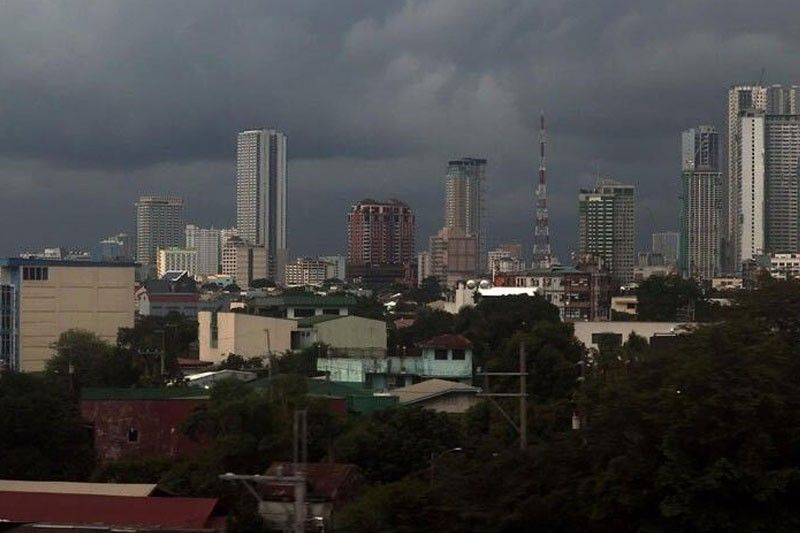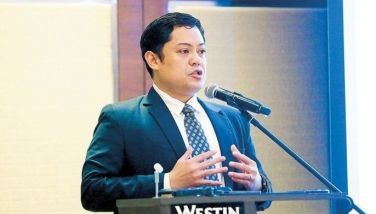Philippine likely grew 6 percent in Q2

MANILA, Philippines — Most economists believe the Philippine economy sustained its robust growth, with the gross domestic product (GDP) expansion staying above six percent in the second quarter.
Alvin Ang, chairman of the Department of Economics at Ateneo de Manila University, said economic growth likely picked up slightly to 6.5 percent in the second quarter from 6.4 percent in the first quarter.
“The second quarter GDP may have grown by 6.5 percent on account of continued spillover consumption growth, particularly supporting travel, transportation and recreation,” Ang said.
He noted that better weather during the second quarter also increased construction and agricultural activities.
Security Bank senior assistant vice president and chief economist Robert Dan Roces said the economy likely expanded by 6.1 percent between April and June.
“Growth may have been driven by the still robust consumer spending and improved exports. Private investments continued in the second quarter, supporting economic activity, while low government consumption served as a dampener,” Roces said.
According to Roces, upsides for the rest of the year include steady private consumption, with inflation tempering a possible lift in government spending numbers, as well as a relatively stable business sentiment with most central banks ending rate hike cycles.
On the other hand, Roces warned that downside risks to growth include the risks to sticky inflation, elevated interest rates and weaker global economic growth.
Michael Ricafort, chief economist at Rizal Commercial Banking Corp., said the economy likely grew by six percent in the second quarter from 6.4 percent in the first quarter.
Ricafort said the country’s GDP growth may normalize at around six percent this year and in the next five to 10 years amid the country’s demographic sweet spot, with the majority of the population of more than 110 million at working age since 2015.
Before the pandemic, Ricafort said the economy grew consistently by at least six percent annually from 2012 to 2019 due to the demographic dividend.
“On the balance, the Philippine economy has already been back to pre-pandemic levels in peso terms at both current prices and constant 2018 prices after two lost years due to COVID, but offsetting challenges remain such as still relatively higher inflation but already on an easing trend from the 14-year peak of 8.7 percent,” Ricafort said.
He said inflation is expected to hover around four percent in the third quarter and three percent in the fourth quarter after easing for the sixth straight month to 4.7 percent in July from 5.4 percent in June.
Inflation averaged 6.8 percent from January to July, still way above the two to four percent target range of the Bangko Sentral ng Pilipinas (BSP).
On the other hand, China Bank chief economist Domini Velasquez believes the country’s GDP growth may have slipped below six percent at 5.9 percent in the second quarter.
Velasquez said the slower expansion in the second quarter was still supported by domestic consumption, which likely continued to remain robust albeit at a slower rate compared with the first quarter.
“Higher inflation could have been offset by post-pandemic spending, which continued at a more moderate pace,” she said.
According to Velasquez, there was also a substantial increase in government and infrastructure spending between April and June.
However, the economist cited the need to hasten government spending in identified agencies lagging behind.
She noted that net exports likely remained soft due to tepid demand amidst a weaker global economy.
“On the supply side, we saw some uptick in the manufacturing and utilities subsectors and we think that services continued to outperform. Similar to other countries, a post-pandemic shift from demand for goods to demand for services helped the sector. In particular, we will probably see substantial gains in air transport, accommodation, arts, and entertainment,” Velasquez said.
Furthermore, she said that agriculture possibly posted a slight increase, although the outlook for the sector is more pessimistic due to El Niño and some torrential typhoons in the third quarter.
“Moving forward, we expect continued moderation in economic activities as elevated policy rates impact business and household spending. In the third quarter, we expect further moderation to around 5.5 percent and full year growth to average 5.8 percent, just shy of the government’s six percent low-end target,” Velasquez said.
- Latest
- Trending





























